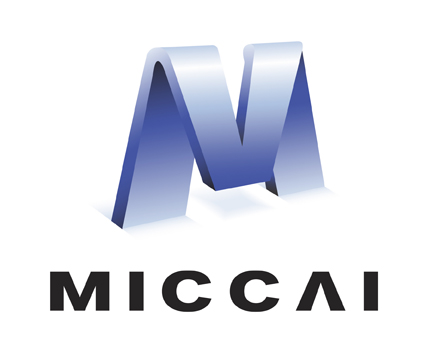Abstract
Cycles or loops in a network embed higher-order interactions beyond pairwise relations. The cycles are essential for the parallel processing of information and enable feedback loops. Despite the fundamental importance of cycles in understanding the higher-order connectivity, identifying and extracting them are computationally prohibitive. This paper proposes a novel persistent homology-based framework for extracting and modelling cycles in brain networks using the Hodge Laplacian. The method is applied in discriminating the functional brain networks of males and females. The code for modeling cycles through the Hodge Laplacian is provided in https://github.com/laplcebeltrami/hodge.
This study is funded by NIH R01 EB022856, EB02875, NSF MDS-2010778.
Access this chapter
Tax calculation will be finalised at checkout
Purchases are for personal use only
Similar content being viewed by others
References
Anand, D.V., Dakurah, S., Wang, B., Chung, M.K.: Hodge-Laplacian of brain networks and its application to modeling cycles. arXiv preprint arXiv:2110.14599 (2021)
Battiston, F., et al.: Networks beyond pairwise interactions: structure and dynamics. Phys. Rep. 874, 1–92 (2020)
Buckner, R.L.: Cortical hubs revealed by intrinsic functional connectivity: mapping, assessment of stability, and relation to alzheimer’s disease. J. Neurosci. 29, 1860–1873 (2009)
Bullmore, E., Sporns, O.: Complex brain networks: graph theoretical analysis of structural and functional systems. Nat. Rev. Neurosci. 10, 186–198 (2009)
Busaryev, O., Cabello, S., Chen, C., Dey, T.K., Wang, Y.: Annotating simplices with a homology basis and its applications. In: Fomin, F.V., Kaski, P. (eds.) SWAT 2012. LNCS, vol. 7357, pp. 189–200. Springer, Heidelberg (2012). https://doi.org/10.1007/978-3-642-31155-0_17
Chen, C., Freedman, D.: Measuring and computing natural generators for homology groups. Comput. Geom. 43, 169–181 (2010)
Chung, M.K., Huang, S.G., Songdechakraiwut, T., Carroll, I.C., Goldsmith, H.H.: Statistical analysis of dynamic functional brain networks in twins. arXiv preprint arXiv:1911.02731 (2019)
Chung, M.K., Lee, H., DiChristofano, A., Ombao, H., Solo, V.: Exact topological inference of the resting-state brain networks in twins. Netw. Neurosci. 3, 674–694 (2019)
Dey, T.K., Fan, F., Wang, Y.: Computing topological persistence for simplicial maps. In: Proceedings of the Thirtieth Annual Symposium on Computational Geometry, pp. 345–354 (2014)
Edelsbrunner, H., Harer, J., et al.: Persistent homology-a survey. Contemp. Math. 453, 257–282 (2008)
Farazi, M., Zhan, L., Lepore, N., Thompson, P.M., Wang, Y.: A univariate persistent brain network feature based on the aggregated cost of cycles from the nested filtration networks. In: 2020 IEEE 17th International Symposium on Biomedical Imaging (ISBI), pp. 1–5. IEEE (2020)
Giusti, C., Ghrist, R., Bassett, D.S.: Two’s company, three (or more) is a simplex. J. Comput. Neurosci. 41, 1–14 (2016)
Glasser, M.F., et al.: The minimal preprocessing pipelines for the human connectome project. Neuroimage 80, 105–124 (2013)
Hatcher, A., Press, C.U., of Mathematics, C.U.D.: Algebraic Topology. Algebraic Topology. Cambridge University Press, Cambridge (2002)
Huang, S.G., Samdin, S.B., Ting, C.M., Ombao, H., Chung, M.K.: Statistical model for dynamically-changing correlation matrices with application to brain connectivity. J. Neurosci. Methods 331, 108480 (2020)
Lee, H., Chung, M.K., Kang, H., Lee, D.S.: Hole detection in metabolic connectivity of Alzheimer’s disease using k-Laplacian. In: Golland, P., Hata, N., Barillot, C., Hornegger, J., Howe, R. (eds.) MICCAI 2014. LNCS, vol. 8675, pp. 297–304. Springer, Cham (2014). https://doi.org/10.1007/978-3-319-10443-0_38
Lind, P.G., Gonzalez, M.C., Herrmann, H.J.: Cycles and clustering in bipartite networks. Phys. Rev. E 72, 056127 (2005)
Meunier, D., Lambiotte, R., Fornito, A., Ersche, K., Bullmore, E.T.: Hierarchical modularity in human brain functional networks. Front. Neuroinf. 3, 37 (2009)
Petri, G., et al.: Homological scaffolds of brain functional networks. J. Roy. Soc. Interface 11, 20140873 (2014)
Reani, Y., Bobrowski, O.: Cycle registration in persistent homology with applications in topological bootstrap. arXiv preprint arXiv:2101.00698 (2021)
Sizemore, A.E., Giusti, C., Kahn, A., Vettel, J.M., Betzel, R.F., Bassett, D.S.: Cliques and cavities in the human connectome. J. Comput. Neurosci. 44(1), 115–145 (2017). https://doi.org/10.1007/s10827-017-0672-6
Sizemore, A.E., Phillips Cremins, J.E., Ghrist, R., Bassett, D.S.: The importance of the whole: topological data analysis for the network neuroscientist. Netw. Neurosci. 3, 656–673 (2019)
Songdechakraiwut, T., Shen, L., Chung, M.: Topological learning and its application to multimodal brain network integration. In: de Bruijne, M., et al. (eds.) MICCAI 2021. LNCS, vol. 12902, pp. 166–176. Springer, Cham (2021). https://doi.org/10.1007/978-3-030-87196-3_16
Topaz, C.M., Ziegelmeier, L., Halverson, T.: Topological data analysis of biological aggregation models. PloS one 10, e0126383 (2015)
Torres, L., Blevins, A.S., Bassett, D., Eliassi-Rad, T.: The why, how, and when of representations for complex systems. SIAM Rev. 63, 435–485 (2021)
Tzourio-Mazoyer, N., et al.: Automated anatomical labeling of activations in SPM using a macroscopic anatomical parcellation of the MNI MRI single-subject brain. Neuroimage 15, 273–289 (2002)
Van Essen, D.C., et al.: The WU-MINN human connectome project: an overview. Neuroimage 80, 62–79 (2013)
Van Essen, D.C., et al.: The human connectome project: a data acquisition perspective. Neuroimage 62, 2222–2231 (2012)
Yates, R.C.: Curves and their properties (1974)
Zhan, L., et al.: The significance of negative correlations in brain connectivity. J. Comp. Neurol. 525, 3251–3265 (2017)
Author information
Authors and Affiliations
Corresponding author
Editor information
Editors and Affiliations
Rights and permissions
Copyright information
© 2022 The Author(s), under exclusive license to Springer Nature Switzerland AG
About this paper
Cite this paper
Dakurah, S., Anand, D.V., Chen, Z., Chung, M.K. (2022). Modelling Cycles in Brain Networks with the Hodge Laplacian. In: Wang, L., Dou, Q., Fletcher, P.T., Speidel, S., Li, S. (eds) Medical Image Computing and Computer Assisted Intervention – MICCAI 2022. MICCAI 2022. Lecture Notes in Computer Science, vol 13431. Springer, Cham. https://doi.org/10.1007/978-3-031-16431-6_31
Download citation
DOI: https://doi.org/10.1007/978-3-031-16431-6_31
Published:
Publisher Name: Springer, Cham
Print ISBN: 978-3-031-16430-9
Online ISBN: 978-3-031-16431-6
eBook Packages: Computer ScienceComputer Science (R0)



